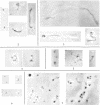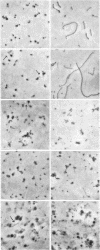Abstract
Weibull, C. (Central Bacteriological Laboratory of Stockholm City, Stockholm, Sweden) and Britt-Marie Lundin. Morphology of pleuropneumonia-like organisms and bacterial L forms grown in liquid media. J. Bacteriol. 85:440–445. 1963.—Cells of Mycoplasma hominis, M. laidlawii, and two tissue-culture strains of pleuropneumonia-like organisms (PPLO) moving freely in liquid medium were photographed with an electronic flash as the light source. The photomicrographs thus obtained demonstrated that, in young cultures of high viability, the cells of these organisms were mainly filamentous or, in the case of M. laidlawii, coccoid. In old cultures of the same organisms containing predominantly nonviable cells, granular and vesicular elements were found. By the use of the same photographic technique, liquid cultures of a stable Proteus L form were studied. Although no filaments of uniform thickness were found, there were spherical bodies and some threadlike material connected with the spheres. When samples of PPLO cultures containing filamentous forms were transferred to agar blocks, the filaments were converted to more or less spherical bodies. This conversion could be prevented by fixing the PPLO with formaldehyde. The morphology of Proteus L forms was not noticeably altered by fixation with this reagent.
Full text
PDF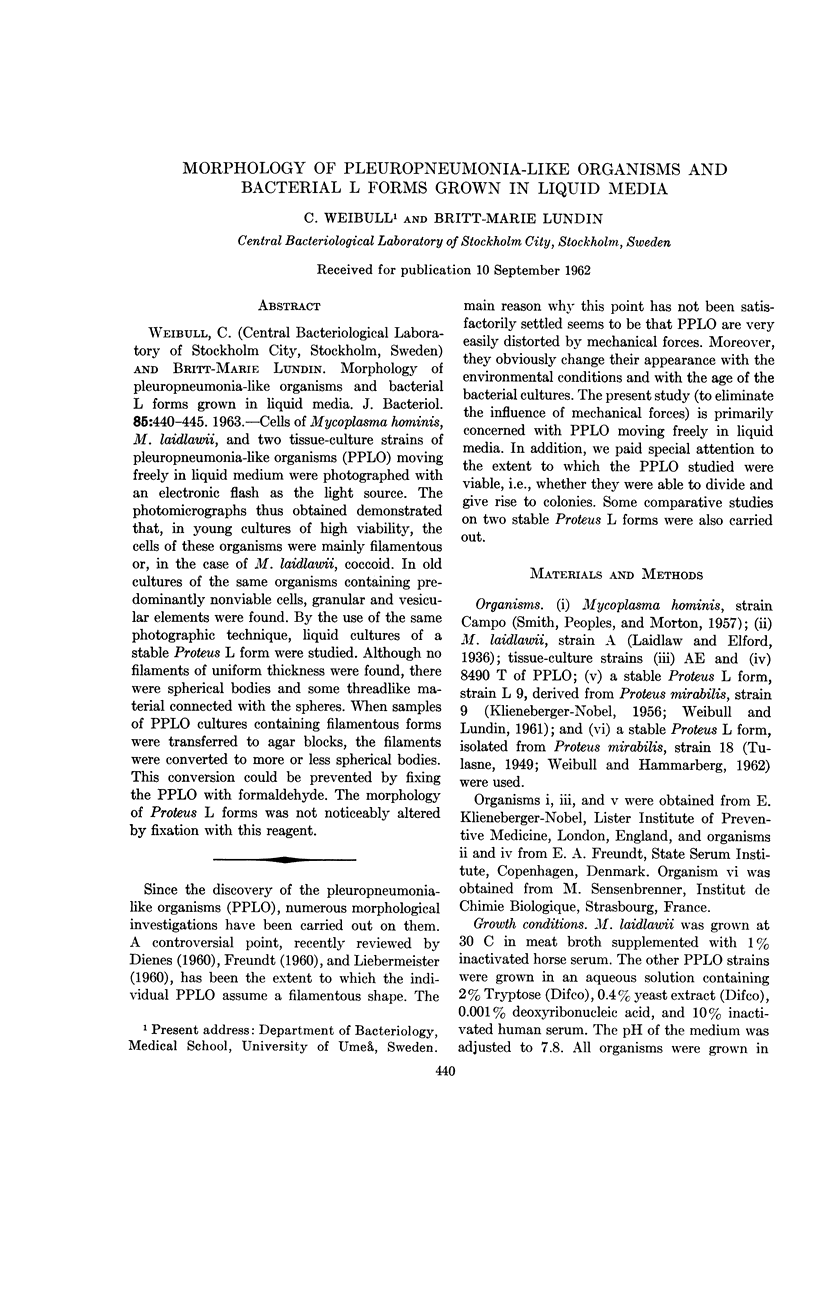
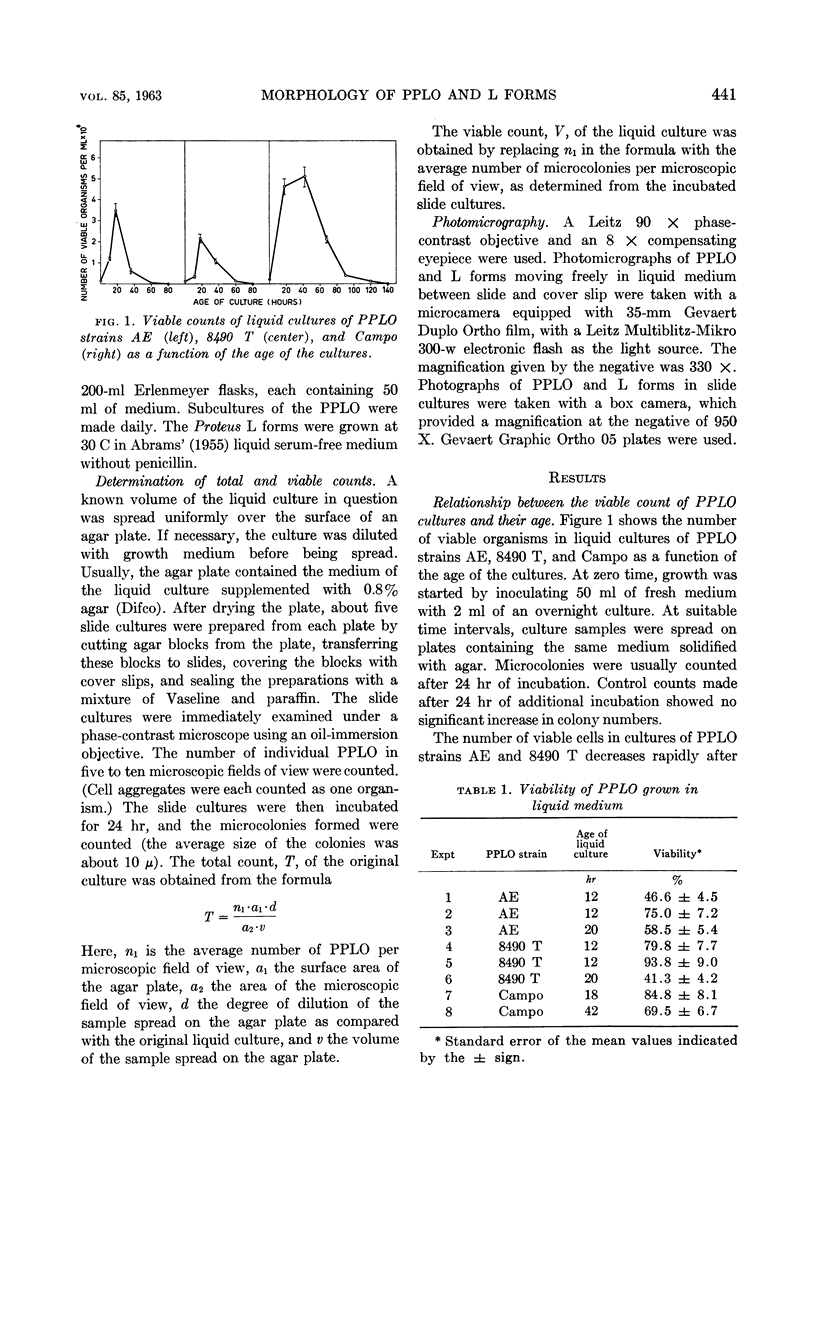
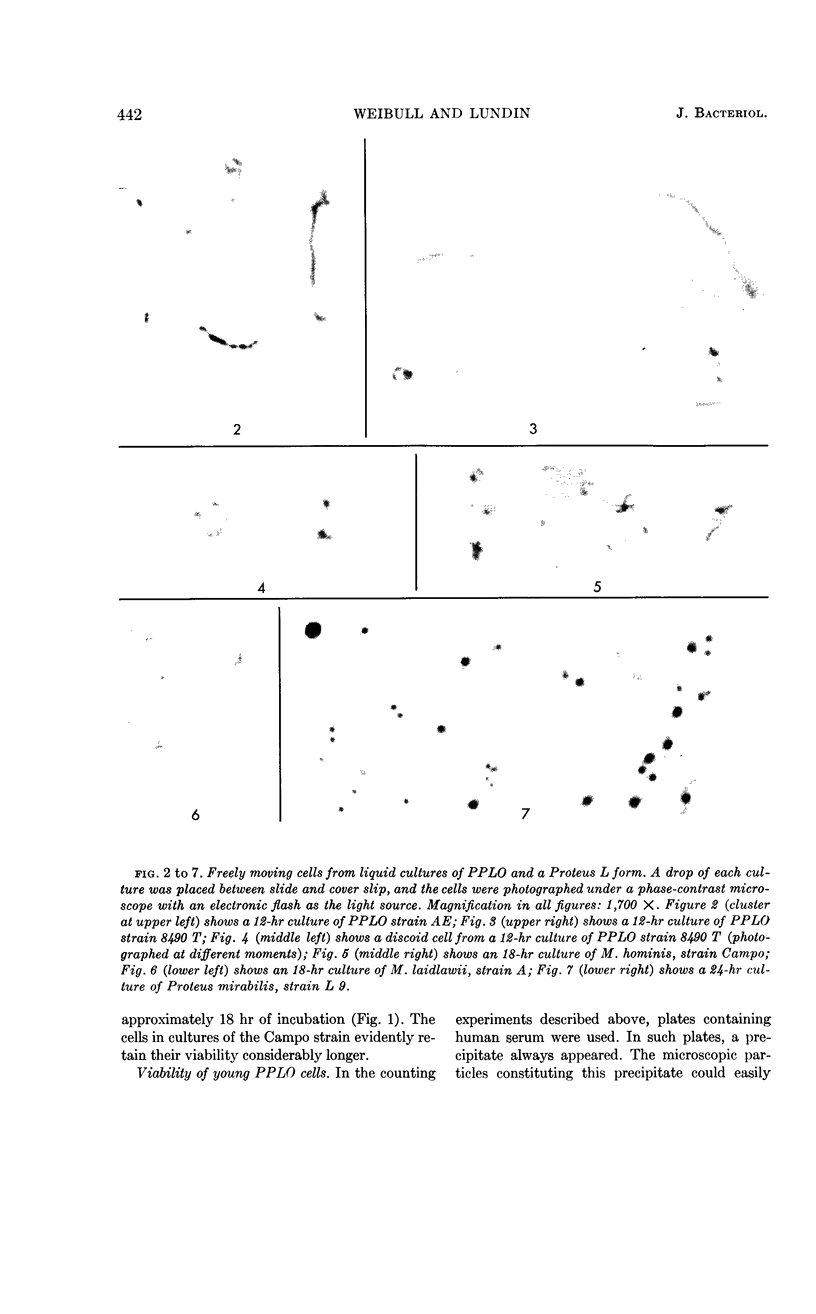
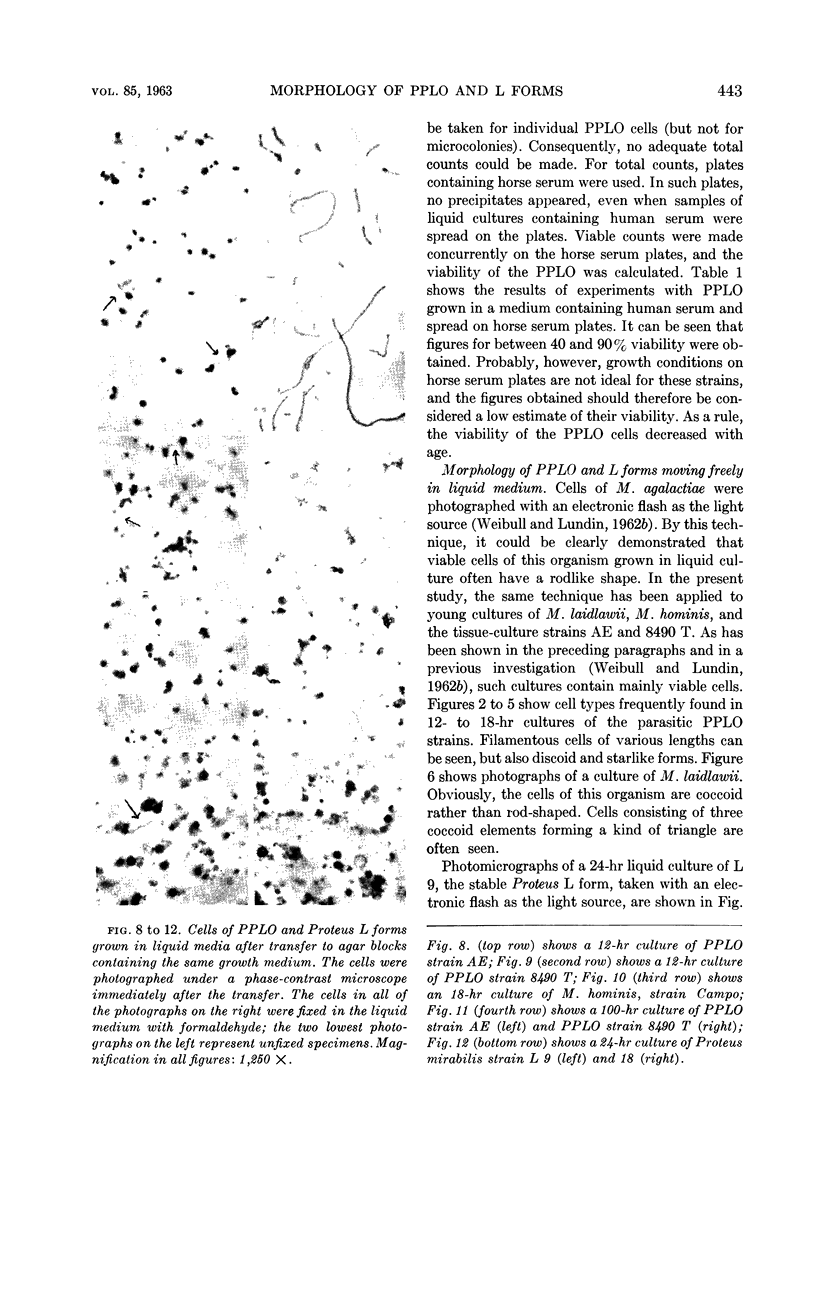
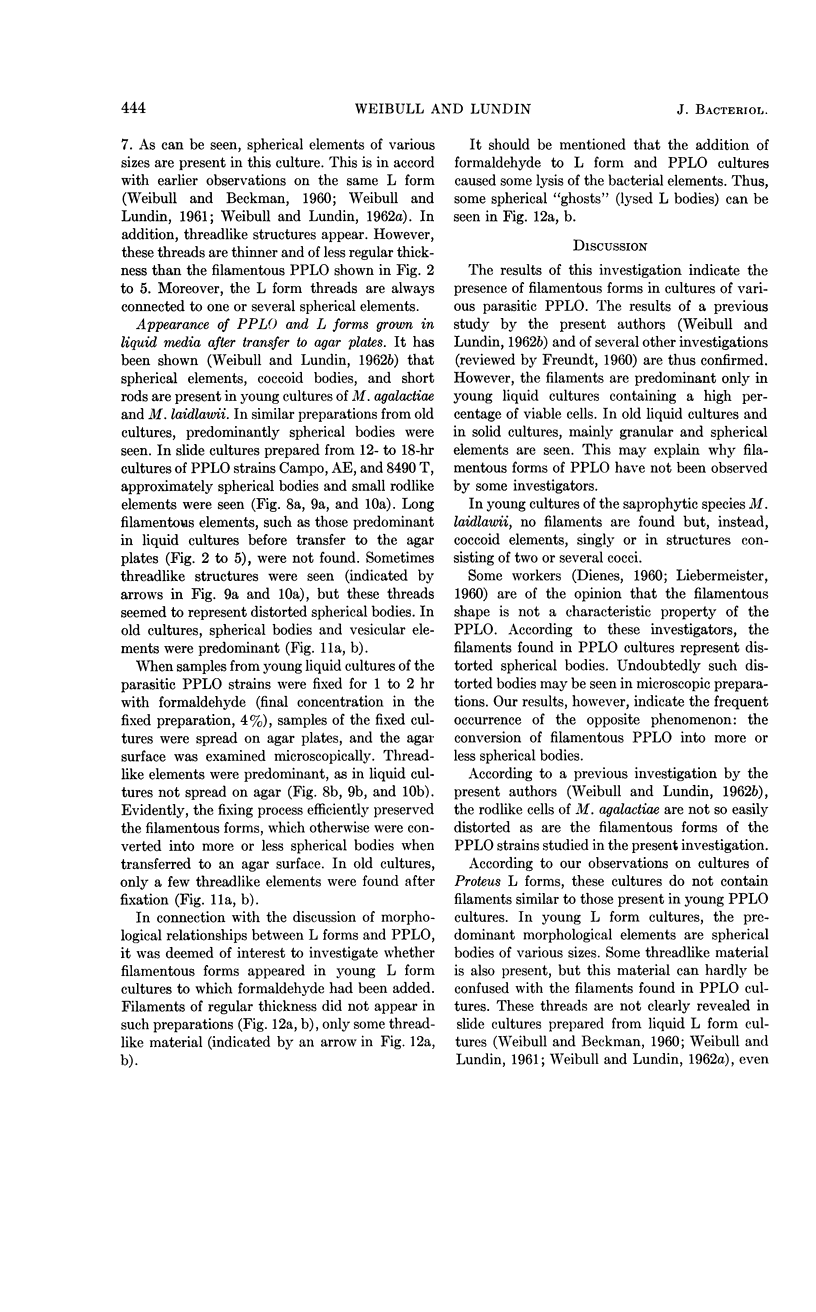
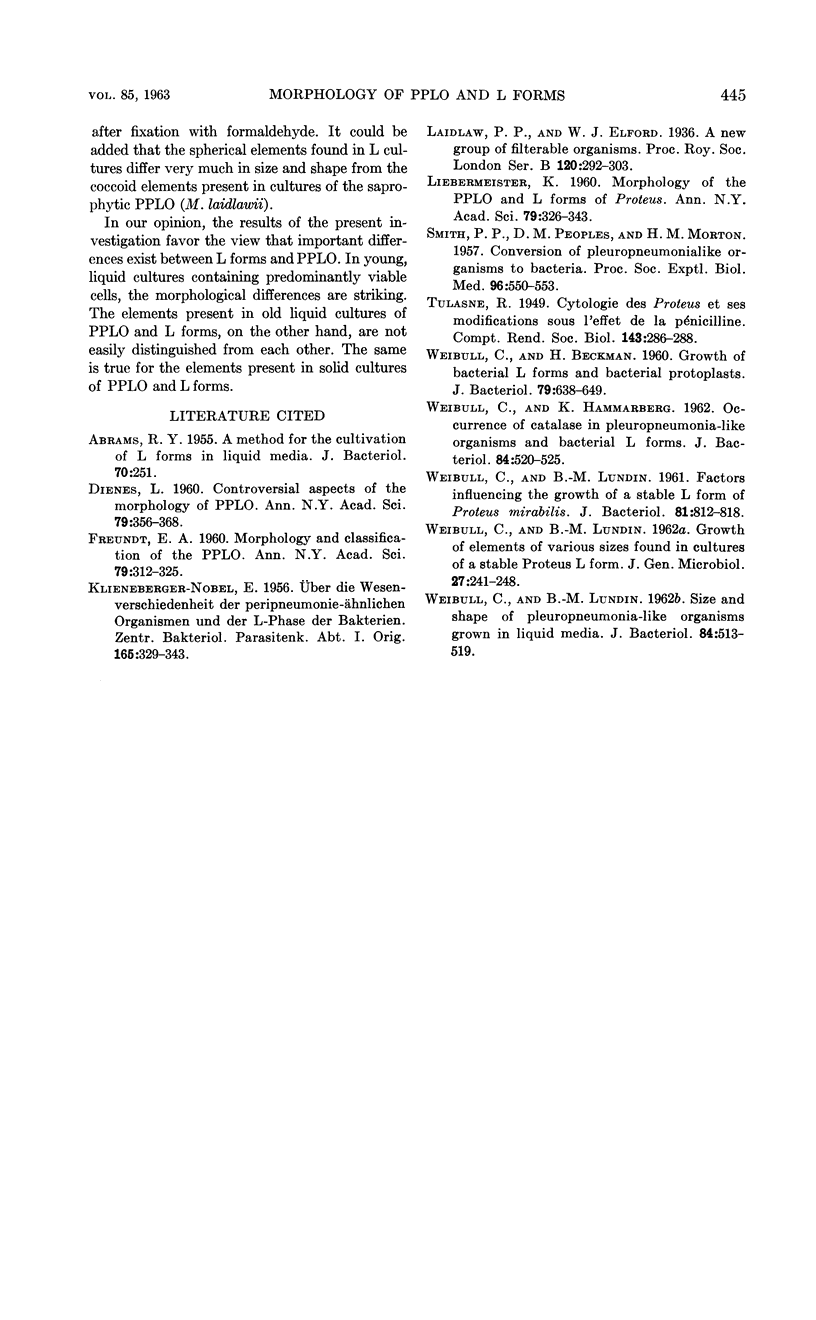
Images in this article
Selected References
These references are in PubMed. This may not be the complete list of references from this article.
- ABRAMS R. Y. A method for the cultivation of L forms in liquid media. J Bacteriol. 1955 Aug;70(2):251–251. doi: 10.1128/jb.70.2.251-251.1955. [DOI] [PMC free article] [PubMed] [Google Scholar]
- DIENES L. Controversial aspects of the morphology of PPLO. Ann N Y Acad Sci. 1960 Jan 15;79:356–368. doi: 10.1111/j.1749-6632.1960.tb42696.x. [DOI] [PubMed] [Google Scholar]
- FREUNDT E. A. Morphology and classification of the PPLO. Ann N Y Acad Sci. 1960 Jan 15;79:312–325. doi: 10.1111/j.1749-6632.1960.tb42693.x. [DOI] [PubMed] [Google Scholar]
- KLIENEBERGER-NOBEL E. Uber die Wesensverschiedenheit der peripneumonie-ähnlichen Organismen und der L-Phase der Bakterien. Zentralbl Bakteriol Orig. 1956 Apr;165(5-7):329–343. [PubMed] [Google Scholar]
- LIEBERMEISTER K. Morphology of the PPLO and L forms of Proteus. Ann N Y Acad Sci. 1960 Jan 15;79:326–343. doi: 10.1111/j.1749-6632.1960.tb42694.x. [DOI] [PubMed] [Google Scholar]
- SMITH P. F., PEOPLES D. M., MORTON H. E. Conversion of pleuropneumonialike organisms to bacteria. Proc Soc Exp Biol Med. 1957 Nov;96(2):550–553. doi: 10.3181/00379727-96-23536. [DOI] [PubMed] [Google Scholar]
- WEIBULL C., BECKMAN H. Growth of bacterial L forms and bacterial protoplasts. J Bacteriol. 1960 May;79:638–649. doi: 10.1128/jb.79.5.638-649.1960. [DOI] [PMC free article] [PubMed] [Google Scholar]
- WEIBULL C., HAMMARBERG K. Occurrence of catalase in pleuropneumonia-like organisms and bacterial L forms. J Bacteriol. 1962 Sep;84:520–525. doi: 10.1128/jb.84.3.520-525.1962. [DOI] [PMC free article] [PubMed] [Google Scholar]
- WEIBULL C., LUNDIN B. M. Factors influencing the growth of a stable L form of Proteus mirabilis. J Bacteriol. 1961 May;81:812–818. doi: 10.1128/jb.81.5.812-818.1961. [DOI] [PMC free article] [PubMed] [Google Scholar]
- WEIBULL C., LUNDIN B. M. Growth of elements of various sizes found in cultures of a stable Proteus L form. J Gen Microbiol. 1962 Feb;27:241–248. doi: 10.1099/00221287-27-2-241. [DOI] [PubMed] [Google Scholar]
- WEIBULL C., LUNDIN B. M. Size and shape of pleuropneumonia-like organisms grown in liquid media. J Bacteriol. 1962 Sep;84:513–519. doi: 10.1128/jb.84.3.513-519.1962. [DOI] [PMC free article] [PubMed] [Google Scholar]



